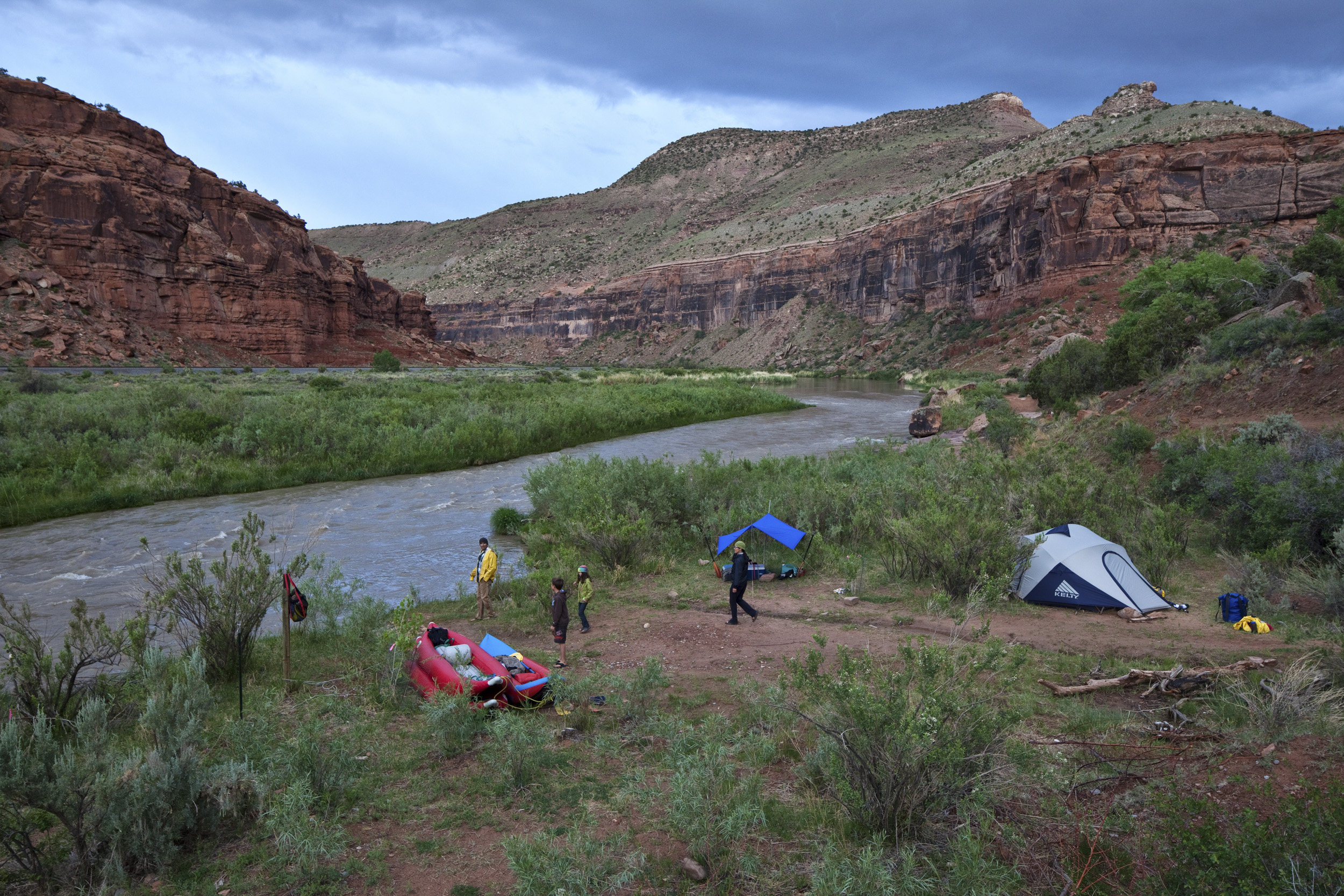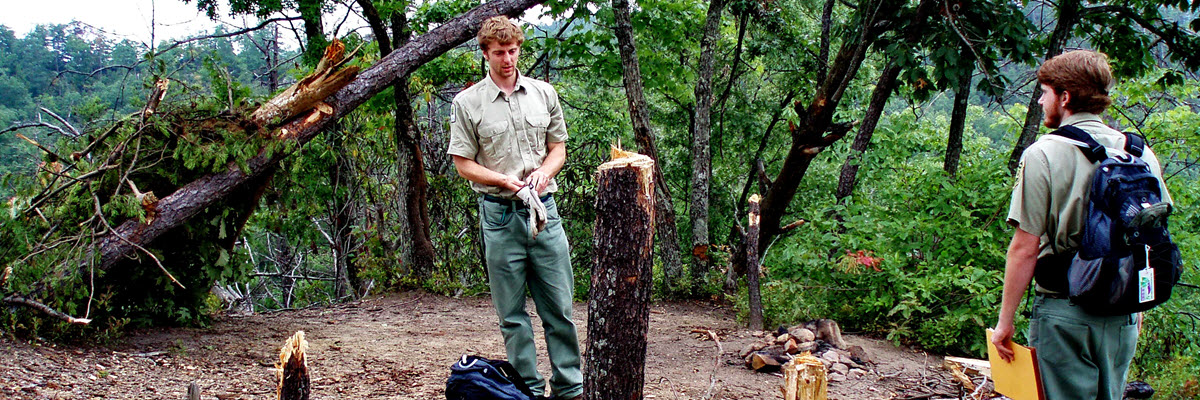Element 4: Implement, Monitor, Evaluate, and Adjust

Element 4: Implement, Monitor, Evaluate, and Adjust
The purpose of this element is to answer the questions:
-
What are we trying to achieve, and how will conditions be tracked over time? The products that result from element 2 include:
- A narrative that describes desired condition(s) for a geographic area or for zones within a geographic area.
- Lists of visitor activities, facilities, and services that are appropriate, appropriate with restrictions, or not appropriate.
- An indicator or indicators that managers are committed to monitor over time to ensure resource conditions and opportunities for visitor experiences remain consistent with desired conditions (i.e., within established thresholds).
Element 4 includes three interrelated steps:
Step 12
Implement management actions.Step 13
Conduct and document ongoing monitoring, and evaluate the effectiveness of management actions in achieving desired conditions.Step 14
Adjust management actions if needed to achieve desired conditions, and document rationale.Assessing the outcome of management actions is necessary to ensure that these actions are having the intended effects. In many cases, monitoring programs involve dynamic social and natural resource systems. Conditions are monitored against established indicators and thresholds and triggers, if triggers were developed. Based on monitoring, current management action effectiveness is evaluated. This process allows managers to be sensitive to changing conditions and to adjust management strategies and actions as necessary.
The work in this section builds upon previous steps and allows managers to evaluate current conditions compared to the desired conditions as related to results of monitoring indicators. Like other elements of the framework, the level of effort associated with any project is largely dependent on where the project falls on the sliding scale. At the low end of the scale, actions may be implemented immediately, and the associated monitoring may require a single indicator that is qualitative in nature. However, on the higher end of the scale, implementation may require a specific and phased strategy due to the number or complexity of actions to be implemented, and the monitoring may be more intensive, comprehensive, and quantitative.
STEP 12. IMPLEMENT MANAGEMENT ACTIONS
The purpose of this step is to implement management actions. Implement management actions that were identified and designed in step 9 of element 3 and additional management actions that may have been added in step 10 if managing within capacity. These management actions were selected to achieve desired conditions and to help ensure that thresholds are not exceeded.
Implementation involves at least three steps:
Prepare for implementation: Make sure that the resources necessary for implementation are available. Ensure that the funding, training, staffing, and other resources are available to initiate the new action. Develop a communication plan with the sliding scale (chapter 2) in mind. If a planned action is not going to be implemented, document it at this time.
Implement the new management action: Gather and prepare staff to initiate the action. Make sure relevant staff members and stakeholders know about the implementation. Train relevant staff on the new action; purchase supplies, equipment, and products; and hire contractors, if necessary. Ensure staff members know how to care for changed facilities and what the desired conditions are for the area. Inform the public with announcements so people know change is coming.
Watch for immediate reactions: Look for the visitors’ immediate reactions toward change, and implement support on the ground and in the office when the new management action is applied. This is essential and will increase the chances of success because it increases the agency’s ability to address concerns and respond appropriately. The length of time to watch for these immediate reactions depends on the magnitude of the change, the reaction of visitors, and where the project is on the sliding scale. Whatever the action is, ensure agency presence so problems can be addressed immediately and visitors’ questions and concerns can be answered and noted.
STEP 13. CONDUCT AND DOCUMENT ONGOING MONITORING, AND EVALUATE THE EFFECTIVENESS OF MANAGEMENT ACTIONS IN ACHIEVING DESIRED CONDITIONS
Conduct Ongoing Monitoring: Monitoring programs regularly assess indicators to ensure that desired conditions are being achieved and thresholds are not being exceeded. Monitoring alerts managers if, when, and how much conditions are changing and identifies when a threshold is nearly reached.
Follow the monitoring strategy developed in step 11. Focus on indicators that provide consistent observations over time. After monitoring data has been analyzed and if a downward trend is documented, take corrective action; don’t wait for the end of a planned monitoring period to do so. Use monitoring results as a tool to inform ongoing adjustment of management strategies and actions.
The monitoring strategy developed in step 11 commits an agency to monitoring, directing how and when to monitor for indicators and desired conditions. Ongoing monitoring efforts ensure that appropriate and timely actions are taken to protect resources and visitor experiences. For additional information on monitoring programs, see the council’s “Indicators, Thresholds, and Monitoring Guidebook” (visitorusemanagement.nps.gov/VUM/Framework).
Document Conditions and Report: Document the effectiveness of management actions in maintaining and meeting the desired conditions that were developed in step 5 of element 2. Retain monitoring data to ensure quality and consistency over time and to identify trends and novel patterns or relationships. Use monitoring data to brief managers, project teams, stakeholder groups, and the general public.
Evaluate Management Actions: Make this analysis very similar to the analysis that was completed as a part of step 8. As observations are made over time about conditions, continually evaluate them in context of the desired conditions. When analysis of monitoring data shows that desired conditions are not being achieved or may fail to be achieved in the near future, adjust the management actions.

STEP 14. ADJUST MANAGEMENT ACTIONS IF NEEDED TO ACHIEVE DESIRED CONDITIONS, AND DOCUMENT RATIONALE
The purpose of this final step in the framework is to adjust management actions based on what is learned during the monitoring process to ensure desired conditions are maintained. For example, on a trail built in a specific area with sensitive resources, monitoring shows impacts from informal trail creation and trail widening. Therefore, one management action may be to better delineate the trail to keep use on the originally planned trail.
How do you know if visitor use management strategies are working?
If desired conditions are being maintained or if conditions are trending toward desired conditions, then management strategies are likely working. Central to this assessment are clearly articulated desired conditions, coupled with a robust monitoring and evaluation program for the area. Please see the Monitoring Guidebook for more guidance: http://visitorusemanagement.nps.gov/VUM/Framework
When to Make Adjustments: Monitoring or other observations of conditions may show a divergence between the current condition and the desired condition. Make adjustments in management strategies or actions when there is evidence that thresholds are being approached, when triggers have been reached, or when conditions are trending away from desired conditions. Adjustments or actions may or may not require NEPA documentation. Don’t be pressured into changing thresholds. They should not be changed without rigorous analysis and a strong rationale.
Problem Analysis: Before making adjustments, strive to identify the probable cause of the issue. Determine the level of action required to correct the resource condition based on the extent to which resources and visitor experiences have changed locally and throughout the protected area. It may be prudent to evaluate the possibility that unexpected changes in desired conditions may be influenced by broader processes (e.g., effects of climate change) and not directly related to local visitor use. Finally, consult other resources and monitoring efforts to ensure that a change to protect one resource does not adversely affect another.
Document Rationale for Adjustments: Document the rationale for adjustments, as adjustments are often diversions from the original justification for action. This documentation helps ensure clarity of purpose and desired outcomes for the agency and various stakeholder groups
Changing Management Strategies or Actions: Many management actions do not require NEPA documentation, such as a greater agency presence, volunteer patrols, and an increased or changed use of signs. When management actions and strategies change, NEPA documentation may be needed. A small change may only involve a 1-day notification in a local newspaper to comply with the requirement of notifying the public of a change. A more significant change may require a plan amendment. Agencies will determine the level of required NEPA documentation.
Review:What are the next steps for implementing your strategies?
Summary
During this final section of the framework, all the planning and decisionmaking is put into action. The approach to implementation and monitoring outlined here prompts managers to take action to achieve desired conditions and monitor and adapt those actions to ensure that the current conditions are consistent with desired conditions.
More
Element Two
Define Visitor Use Management Direction: What conditions are we trying to achieve?
Learn MoreElement Three
Identify Management Strategies: How will visitor use be managed to achieve desired conditions?
Learn MoreElement Four
Implement, Monitor, Evaluate, and Adjust: Are we making progress towards desired conditions?
Learn More








